Meet the Ultimate Cookbook for Healthy, Homemade Food
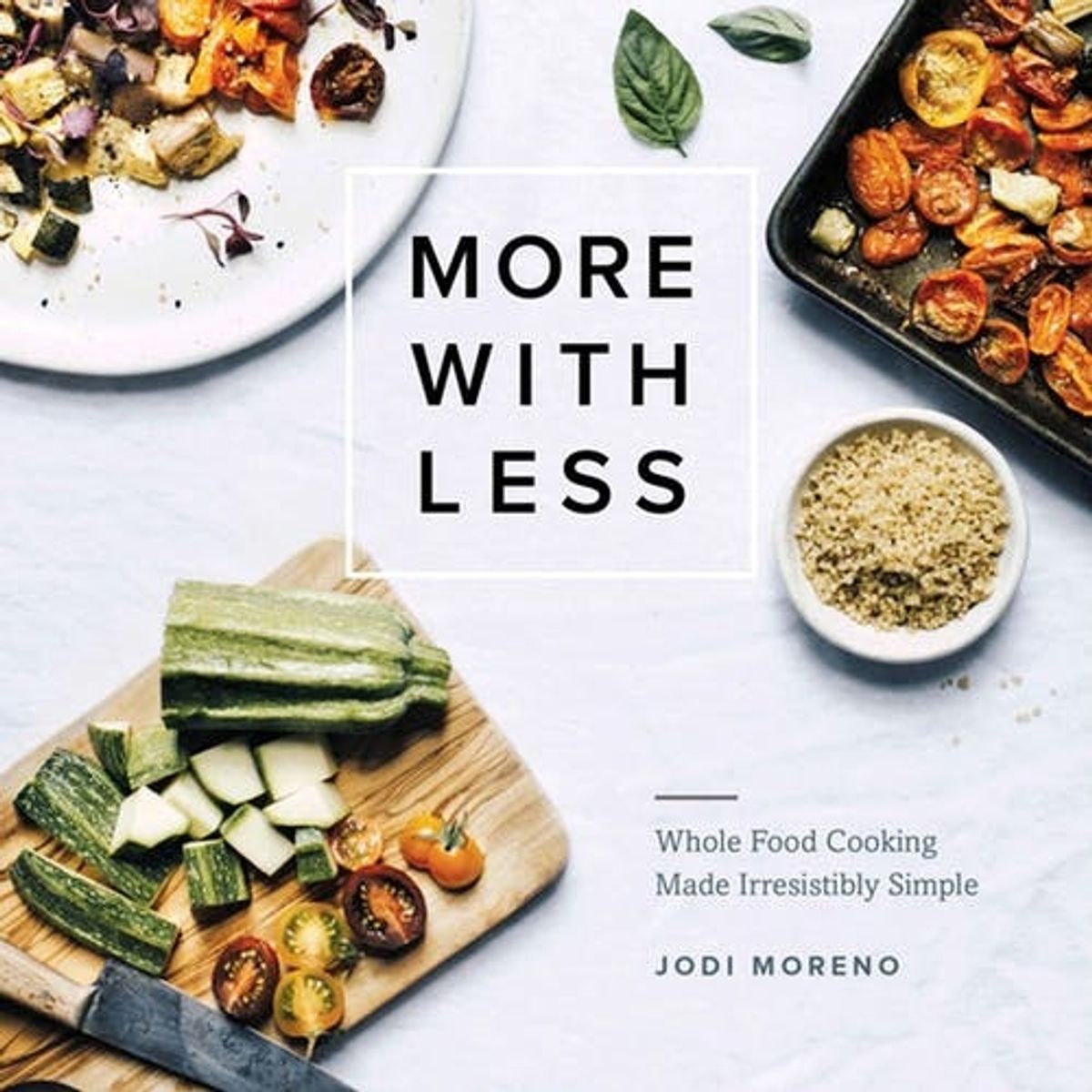

Cookboomarked! is our new series where we review the latest cookbooks from the foodie influencers you follow. Check back often to find out which new releases are worth your hard-earned cash and the recipes you should try first from each.
We know that ditching processed food for a healthy, homemade eating style can be tricky, but you’ve got a friend in More With Less ($35) by Jodi Moreno of the blog What’s Cooking Good Looking and co-owner of the Brooklyn communal kitchen Neighborhood Studio. Almost all of the 130 recipes have a photograph alongside clear, simple Directions, most only one page long. As a bonus, Moreno intentionally sticks to recipes with 10 ingredients or less. Hooray for us! Keep reading to learn about the unique aspects of book (hint: Moreno’s really into condiments) as well as a few of our choice recipes to get you started.
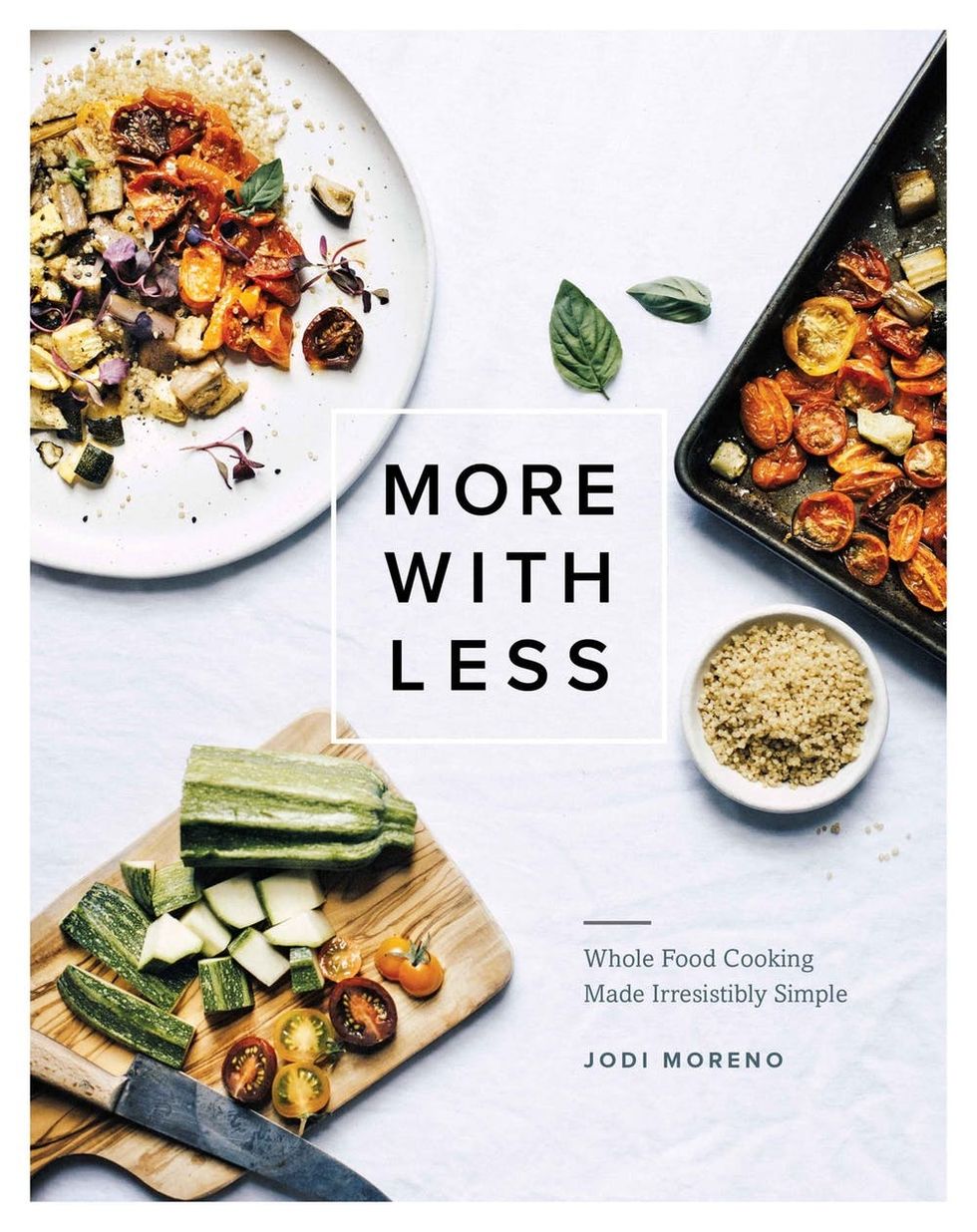
Cooking equations
Moreno’s approach to cooking is all about a master recipe with multiple variations, so you never grow tired of eating the same thing on repeat. For instance, she’ll start with a base for hummus, then provide playful takes on it using beets or lentils in place of traditionally used chickpeas. More With Less also tries to focus on easy-to-memorize meal equations like “quick one-pan meals = fish + veggies.” Using the same cooking method, which involves roasting the fish and veggies on a sheet tray, the recipe includes four variations to keep things fresh.
condiments on everything
We love the idea that dinner can be a snap to pull together with a little bit of prep but more importantly for Moreno… a whole lot of sauce. With the right condiment, you can add bold flavors and texture to any basic foods. Moreno suggests having a few on hand for last-minute improvisation and makeovers of leftovers. We’re not talking about ketchup or mustard here. Moreno has a recipe for quick zucchini kimchi that can be versatilely used as a burger topper or to flavor a stir-fry. In addition, kale + olive pesto is recommended to top fish, to toss in pasta, or to add onto a charcuterie board.
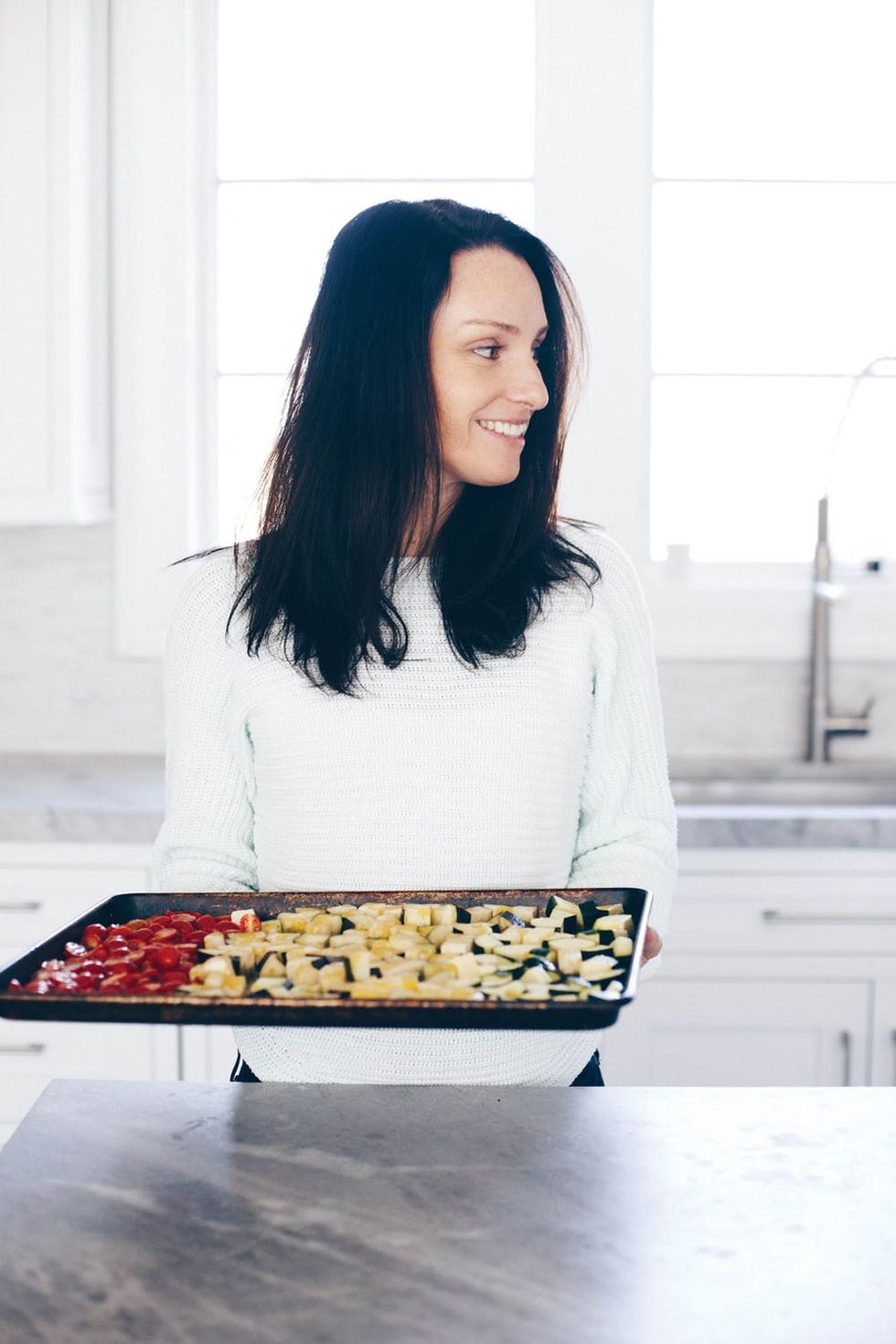
no food waste
Moreno also encourages the reader to think outside the box when it comes to extra food. When you have leftovers, wrap them up in leafy green wraps or rice paper rolls (to be combined with one of the condiments, of course). Or instead of tossing broccoli stems and just using the florets, shave them into ribbons to serve atop broccoli + tahini soup, or slice them into matchsticks in the snap pea + broccoli stem slaw with basil cilantro aioli.
Ingredients on Repeat
Moreno won’t ask you to stock your kitchen with a zillion ingredients that you’ll only use once. She artfully returns to ones like white miso. Do not overlook the insidery secret of mixing umami-rich miso with unsalted butter. It shows up in several recipes, including sautéed maitake mushrooms. We are smitten with the idea of miso mustard, a versatile condiment she suggests can be thinned out to make salad dressing or used as a sauce for white fish. She suggests spreading it onto big leafy (collard or kale) green wraps.
Miso goes way beyond savory dishes too. Later on in the desserts section, Moreno pulses sweet miso into a crumble topping for the apple + miso + date crisp. She says it “adds a buttery taste without the addition of butter.” Speaking of sweets, the four-ingredient chocolate + tahini + sweet potato mousse might be our new favorite way to end meals as it creatively blends roasted sweet potato for the base of this silky smooth, guilt-free dessert.
Check out a few of the aforementioned recipes below so you can get a taste of More With Less.
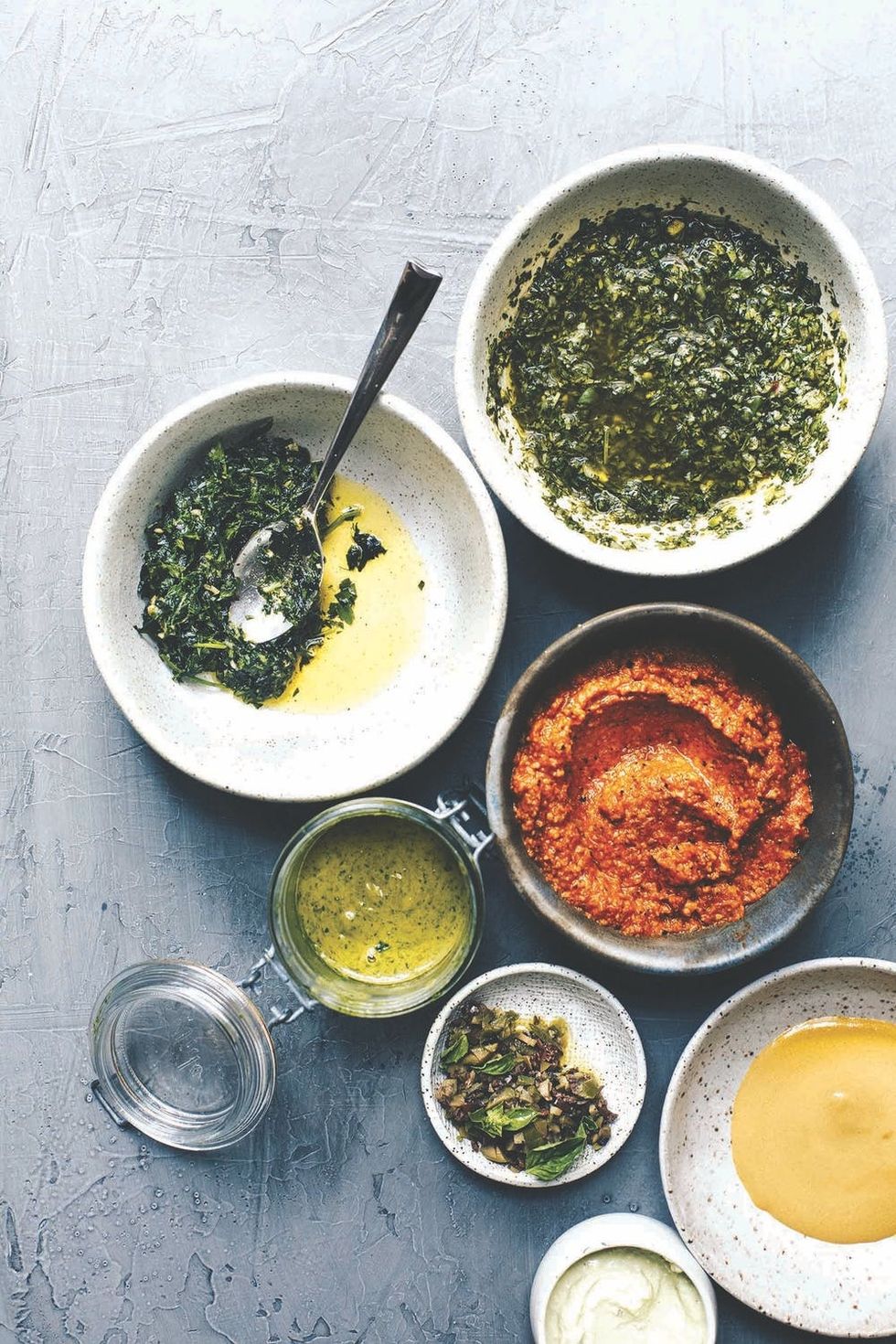
Mustard Miso
(Serves1/3 cup)
Mustard and miso are a tasty pair, and this sauce is so versatile—it can be used for dressing, dipping, and marinating. Sometimes I make this as a dip for raw vegetables or a spread for collard wraps, but one of my favorite uses for this sauce is as a marinade for any kind of white fish.
Ingredients:
- 2 tablespoons Dijon mustard
- 1 teaspoon white miso
- 2 teaspoons apple cider vinegar
- 1 teaspoon tamari
- 1 teaspoon toasted sesame oil
- 2 to 3 tablespoons water
Directions:
Whisk all the ingredients together in a small bowl. Serve immediately. This will keep for a couple of weeks in an airtight container in the fridge.
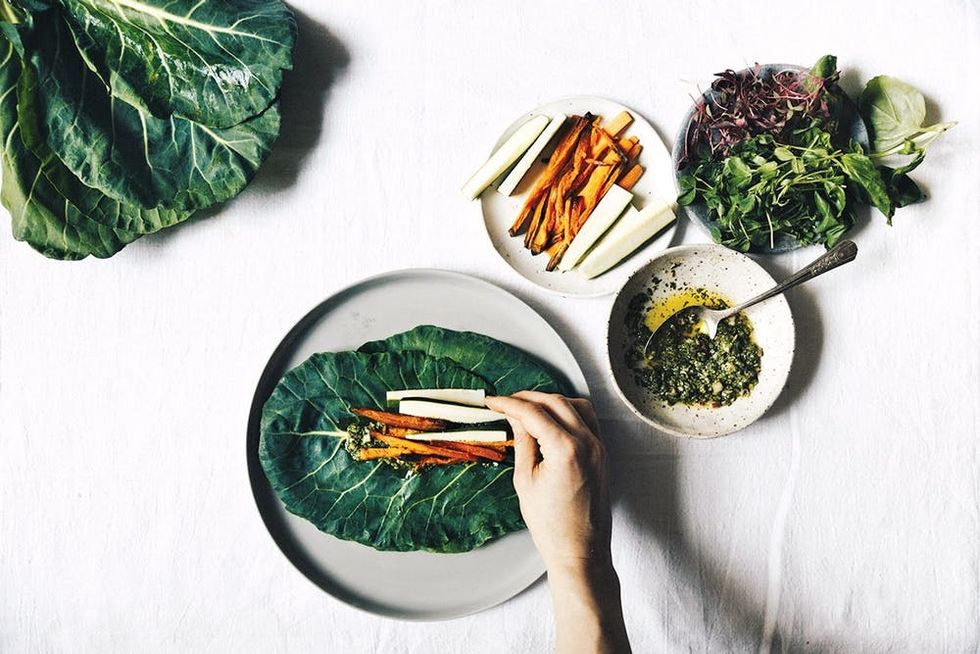
Big Leafy Green Wraps
(Serves 1)
Wraps are an ingenious way to enjoy any leftover veggies in the fridge (both cooked and raw), as well as grains and sauces. They’re great for a snack or a lunch on the go, one you can eat with your hands. Collards, kale, and nori are the most nutritious as wraps, but there’s also rice paper, which I like to think of as more of a treat. These can be stuffed in countless ways. I tend to use nori wraps when I have leftover black or brown rice and some sort of sesame or miso sauce in the fridge. The leafy greens are best stuffed with crunchy raw veggies, or lightly roasted ones with some quinoa for protein, and an herb-forward sauce such as a pesto. Rice paper wraps, which are also used for spring rolls, work best for softer veggies such as roasted sweet potato or avocado. Peanut sauce is my favorite in a rice paper wrap, but experiment with others sauces like chimichurri or even kimchi to add some great punchy flavor.
Ingredients:
- kale or collards, deribbed
- veggies or fruit (raw or lightly roasted): carrots, beets, shiitakes, scallions, celery, cucumbers, tomatoes, zucchini, apples, pears
- herbs: basil, cilantro, parsley
- grains: quinoa, wild rice, brown rice, black rice, millet
- beans or legumes: chickpeas or lentils
- sauces: pesto, chimichurri + yogurt, mustard miso
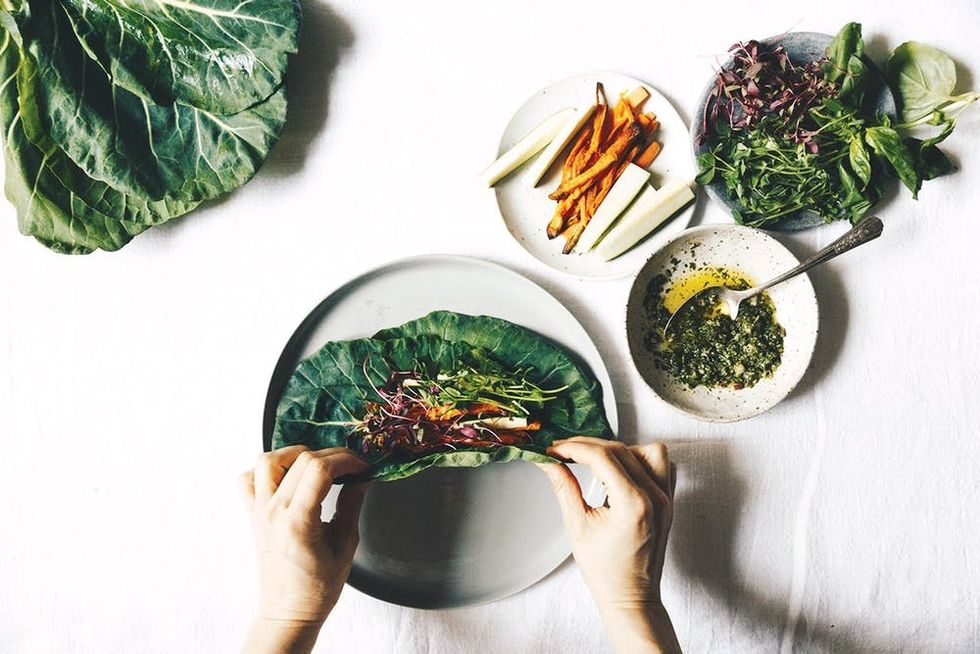
Directions:
Blanch 2 large leafy greens in water for 1 minute, dunk in an ice bath, and dry on a paper towel. Use two overlapped leaves to wrap, placing 4 to 5 thinly sliced veggies along with any other topping you like—herbs, a grain, or a sauce—toward the bottom. Take the bottom of the wrap and fold it up and over the veggies, then fold in the two sides, and roll away from you until it’s completely wrapped.
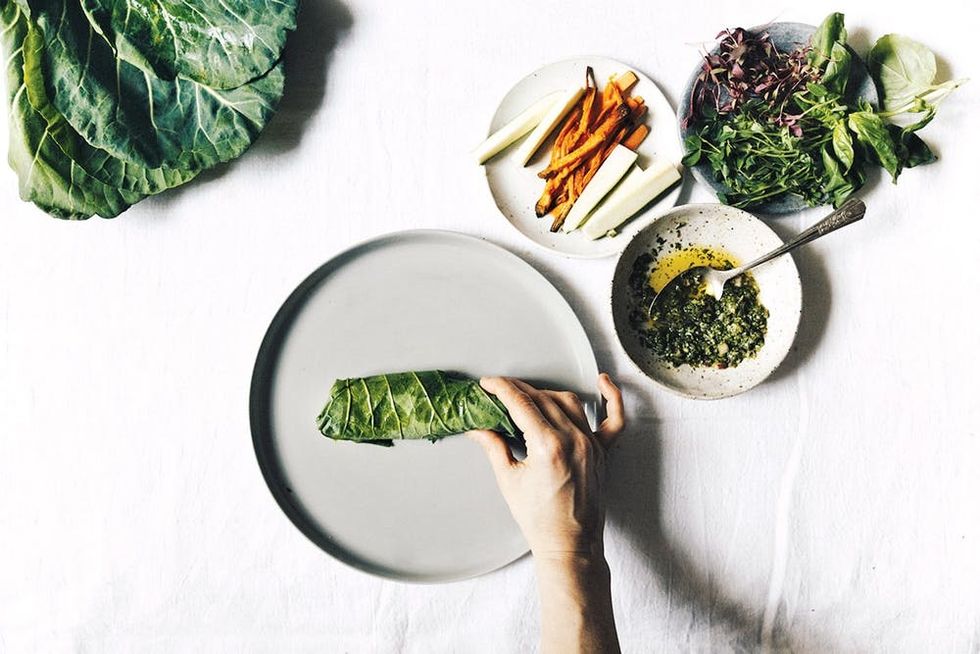
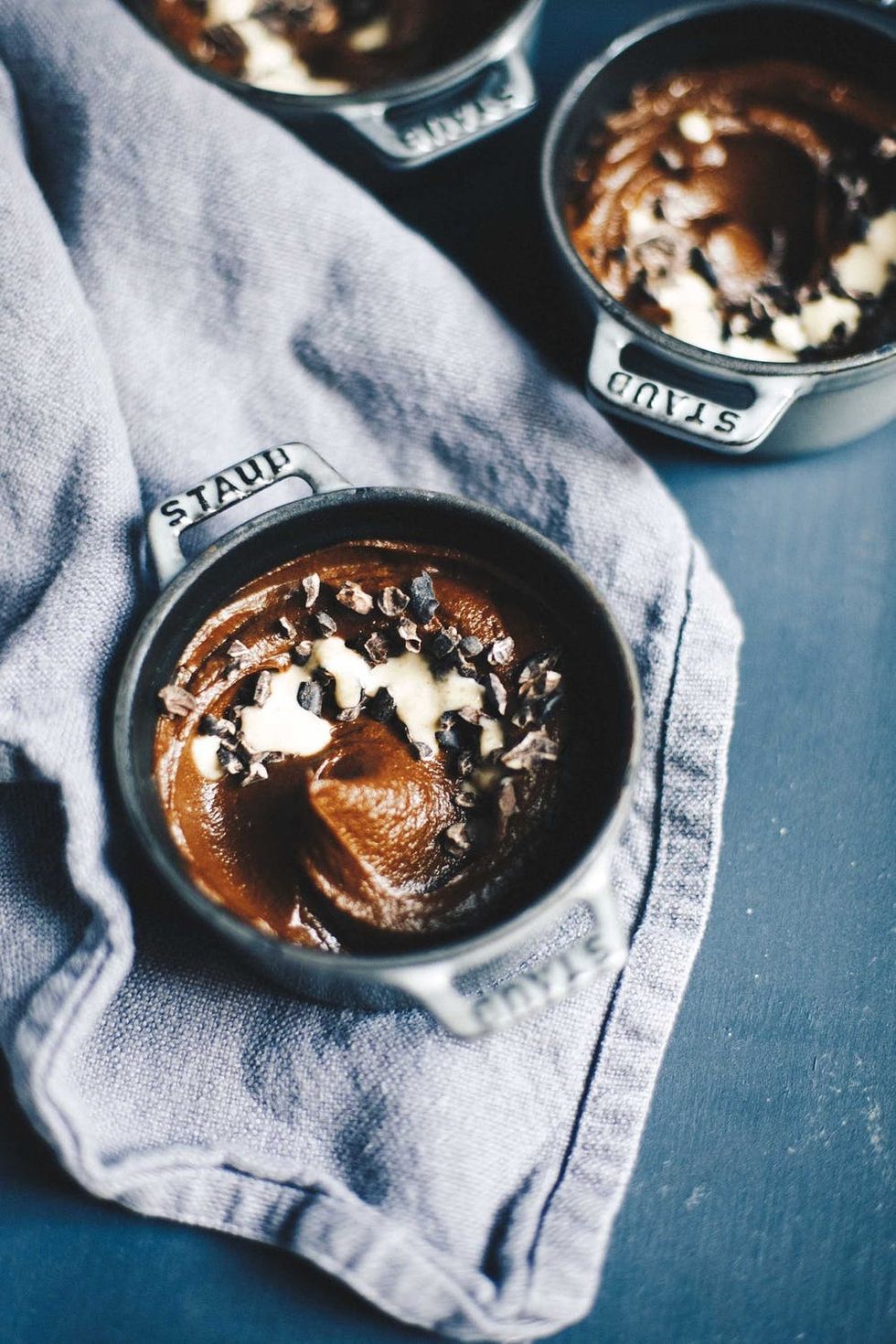
Chocolate + Tahini + Sweet Potato Mousse
(Serves4)
Sneaking sweet potato into a dessert not only gets you to eat more vegetables but is also the secret to making this mousse super-silky smooth. The nuttiness of tahini pairs so well with the richness of the chocolate, and with only a few ingredients, this dessert is as impressive and tasty as it is easy to make. Another bonus is that it only takes minutes in the food processor once your sweet potato has been roasted.
Ingredients:
- 2 medium-size sweet potatoes
- ½ cup cocoa powder
- ½ cup maple syrup
- 2 tablespoons tahini + more for drizzling on top
- ¼ teaspoon sea salt
Directions:
Preheat the oven to 400ºF. Using a fork, poke a bunch of holes into the sweet potatoes, place them on a baking sheet, and roast in the oven for 30 to 40 minutes, until the flesh is cooked through and soft. When the sweet potato is cool enough to handle, cut in half and scoop the flesh out from the skin and into a food processor. Add the cocoa powder, maple syrup, tahini, and salt. Run the food processor until the mixture is smooth. Spoon the mousse into individual serving bowls and top with a drizzle of tahini. Store in the fridge if not enjoying right away. This will keep for several days in an airtight container in the fridge.
Find your next favorite meal on Pinterest.
(Photos and recipes from “More With Less: Whole Food Cooking Made Irresistibly Simple” by Jodi Moreno © 2018 by Jodi Moreno. Reprinted in arrangement with Roost Books, an imprint of Shambhala Publications, Inc.)



















